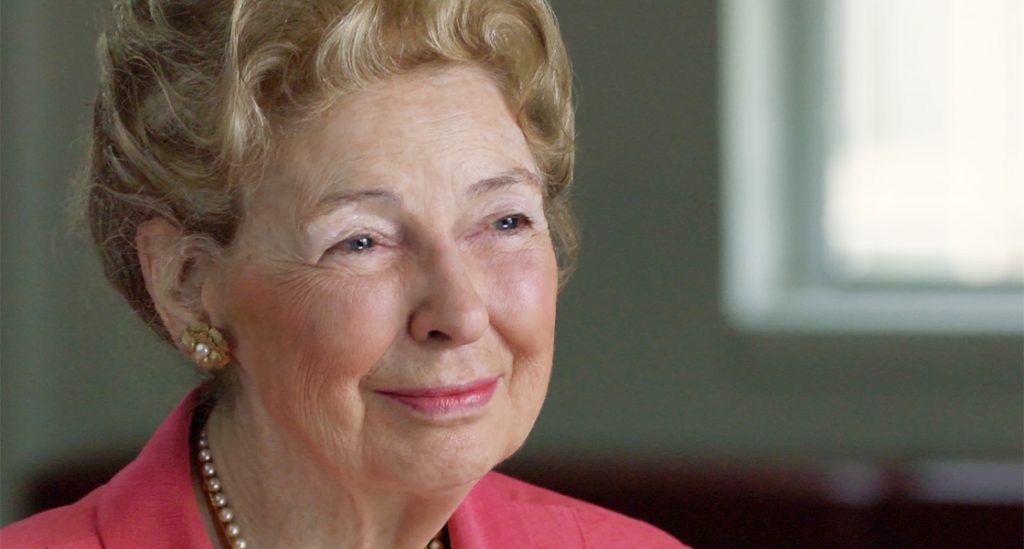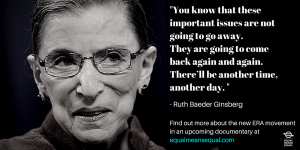Within seconds after she drew her last breadth, the media had a Phyllis Schlafly Festival. Pundits of all political stripes covered almost every aspect of her political legacy, from her Barry Goldwater cheerleading to her anti-feminist and anti-gay activism to her support of Donald Trump. Not surprisingly, most of the articles had wildly different “takes” on Schafly’s work and personality.
However, one aspect of Schlafly’s legacy that was repeated by just about everybody was that SHE WAS THE PERSON WHO STOPPED THE ERA. They assumed that if Schlafly hadn’t arrived on the scene, perhaps the ERA would have become the law of the land.
Sorry, but I just don’t buy it, especially when I saw first-hand who really stopped the ERA.
No doubt, Schlafly had a tremendous impact on killing the amendment and she was a powerful “public face” for the movement. But she could have never done it without the unfailing support of well-heeled conservative religious groups and super-rich business executives, especially Joseph Coors and Jay Van Andel.
When I was a pre-teen in Arizona, I got involved in an ERA postcard campaign. It was my first foray into feminist activism and the campaign was so disorganized that I wondered if the amendment was going to get to the finish line.
In contrast, the Mormon church had organized an anti-ERA campaign with military precision and quickly killed the amendment. The Mormons did not need Schlafly to train them. Indeed, when asked who killed the ERA in Arizona, local feminists would say, “The Mormon church.” Schlafly was an afterthought.
Several years after the national ERA was defeated, I got involved in a local chapter of Business and Professional Women’s Clubs (BPW). A state ERA referendum campaign in Vermont was brewing and BPW mounted a well-organized fund raising drive in each state to “help our sisters in Vermont”. Since the campaign was in Bernie Sanders country, it looked like the amendment had an excellent chance of passing.
However, when Beverly LaHaye and Concerned Women for America ascended the state and they said that ERA would escalate the AIDS epidemic, it was déjà vu. The referendum was narrowly defeated and exit polls showed that around 60% of women voted yes and roughly 70% of men voted no. Again, Vermont didn’t need Schlafly to kill the ERA. Perhaps they didn’t even need Bev LaHaye. The men were the ones who killed the referendum.
I’m not surprised that the “Schlafly killed the ERA” myth is so strong, especially since nobody was better at tooting her horn than Phyllis herself. Nevertheless, journalists, overworked as they are, should have upheld the highest professional standards and dug into the myth, especially since Schlafly is now a legend in the history of American conservatism.
Likewise, it’s high time for feminist historians to write a “Who Financed Phyllis Schlafly?” book, or better yet, a juicy, well-researched, tell-all about the whole Schlafly family.
But regardless of what happens to the Schafly ERA myth, the most critical question we need to ask ourselves is, “What do we do now that Phyllis Schlafly has died?” The passage of a state ERA in Oregon by referendum a few years ago is a sign of hope but we all know it wouldn’t be repeated in Utah and Louisiana.
To have a shot at making the ERA the law of the land, all American feminist organizations would need to take the long view, make ERA a top priority, and train an army of organizers of the caliber of Cecile Richards and the young Alice Paul.
It would take enormous creativity to stay one step ahead of the conservatives. The fact that same sex marriage and women in combat training got “on the books” without ERA will make them even more determined to keep fighting. Right wingers will probably try to cast the ERA as a fight against religious freedom.
And yes, there will be a twenty-first century Phyllis Schlafly. As long as we’re in a patriarchy, there will always be a Phyllis Schlafly.
However, our biggest obstacle wouldn’t be the religious right. It would be the legions of moderates and liberals who think that ERA has become irrelevant because of the Fourteenth Amendment’s Equal Protection clause.
Organizers would have to keep reminding people in very creative ways that the Equal Protection clause applies to women only when liberal and moderate judges are interpreting it. Just ask the notorious Ruth Bader Ginsburg about that one.
At this time, I don’t think the American feminist movement is united enough to make the ERA a top priority. But the trajectory of a movement can change on a dime.
When Gretchen Carlson sued Roger Ailes for sexual harassment, I thought I was dreaming. When several Fox News women sided with her, I thought, “Women supporting women at Fox News? I can’t believe it.” When Megyn Kelly came out with her own story of sexual harassment, I was finally convinced that the case would have an impact. The hard work of feminist activists was seeping into a conservative media empire when we least expected it.
And that’s probably how the ERA will get back into the political arena. ERA momentum will come from the most unlikely place when we least expect it.
And the Phyllis Schlafly’s of the world – and the men who support them- will not have the last word.


